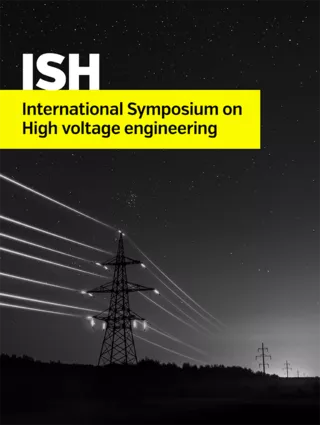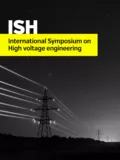Summary
Wet and packed snow, accompanied by conductive pollutants, accreting onto the insulator strings of overhead transmission lines is one of the serious causes of major blackouts. To determine the flashover performance of heavily snow-accreted composite insulators, artificial flashover tests were carried out in a climate hall. The goal of this research is to create flashover performance curves of the composite jumper support insulators and inter-phase spacers used for 154 kV overhead lines. Comparative evaluation with porcelain long-rod and cap-and-pin insulators studied in the authors’ previous works was also provided. Artificial snow was used for the tests and its qualities were defined by liquid water content (LWC), density, and melted water conductivity. The test procedure consisted of four steps: 1) generation of artificial snow with defined conductivity of 200 and 800 ?S/cm, 2) accretion of packed snow on the insulators, 3) increase in the liquid water content of the accreted snow to approximately 20%, simulating an actual value measured from failed overhead lines, and 4) AC high voltage application. The test results indicate that the flashover voltage of both composite insulators decreased with the increase of snow conductivity. Additionally, the flashover voltage gradients along the length of the insulators were higher than the normal operating voltage gradients of 154 kV lines, and they were 25% higher or more when compared to porcelain long-rod insulators but similar to the flashover voltage gradients of cap-and-pin insulators. In the flashover cases of the tests, partial arc discharges first appeared only at small snow gaps and then gradually arced across larger snow gaps, finally bridging the whole insulator to form the flashover arc. In the non-flashover cases, most of the accreted snow remained on the composite insulators and tended to have small and equal interval gaps around the edges of the sheds. These gaps looked like ordered slits, and the presence of such equal interval gaps suggested that there were relatively uniform voltage distributions along the composite insulators. Such a situation seemed to prevent arc propagation and led to higher flashover voltage gradients of the composite insulators. In conclusion, the use of composite insulators could be a reasonable countermeasure against the flashover caused by wet and packed snow accretion onto overhead line insulators, although porcelain cap-and-pin insulators have frequently been applied as a countermeasure in place of porcelain longrod insulators.
Additional informations
| Publication type | ISH Collection |
|---|---|
| Reference | ISH2017_164 |
| Publication year | |
| Publisher | ISH |
| File size | 306 KB |
| Pages number | 6 |
| Price for non member | Free |
| Price for member | Free |
Authors
H. HOMMA, K. ADACHI, Y. HORI, T. NISHIHARA, A. Dernfalk, I. GUTMAN
Keywords
snow damage, overhead lines, insulators, snow accretion, flashover




